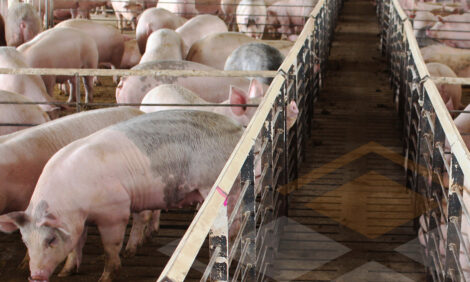



Top 10 cost cutters and revenue generators – Part II
By Lee Whittington, John Patience, Ruurd Zijlstra, Ken Engele, and Shala Christianson and published by Prairie Swine Center. This is Part 2 in the series examining how pork producers can effectively manage costs within their operations. Lowering your cost of production and increasing revenues is more than just good business; for many producers this is the key to surviving the current market situation.
Ideally, all farms are using many of the following ideas, but if not, now is the time to revisit this list and see if there are hidden profits waiting to be discovered. The following list focuses on changes, which can be implemented and monitored easily and inexpensively. In most cases, we have estimated the effect in terms of dollars per pig marketed.
Marketing losses associated with demerits may be larger than one expects. A recent analysis of 2,562 market hogs found approximately 4.5% had demerits of some type. At $1.10/kg market price, those demerits account for a $0.42-$1.39/ckg or ($0.34–1.13/hog) discount when analyzed against the current Western Canadian grids. In addition, when the pool price rises to say $1.50/kg the demerit value increases to $0.52 - $1.84/ckg in lost value. Trim demerits include arthritis, bruising, skin conditions (such as frost bite) and abscesses. If these demerits are taking place in the handling and transport of the hogs there are steps to reduce these losses by reviewing handling facilities and practices in the barn, on the truck and at the plant.
 Feeder adjustment is often seen as too much trouble because many feeders can be difficult to adjust. The performance of weanling pigs was maximized when the feeder gap allowed for 40% of the trough to be covered with feed. This improved feed intake resulting in improved growth performance. Previous research at PSC had already shown that for every 1 kg improvement in weight at 11 weeks of age, body weight at 17 weeks of age improved 1.5-1.8 kg. The optimum economics favours monitoring the feeder gap and reduced pig density approaching 3.75 square feet per pig in the nursery. (PSC Annual Research Report 2000, pg 14).
Feeder adjustment is often seen as too much trouble because many feeders can be difficult to adjust. The performance of weanling pigs was maximized when the feeder gap allowed for 40% of the trough to be covered with feed. This improved feed intake resulting in improved growth performance. Previous research at PSC had already shown that for every 1 kg improvement in weight at 11 weeks of age, body weight at 17 weeks of age improved 1.5-1.8 kg. The optimum economics favours monitoring the feeder gap and reduced pig density approaching 3.75 square feet per pig in the nursery. (PSC Annual Research Report 2000, pg 14).
Pigs require, by weight, approximately 2.5 times more water than feed each day. Previous tests have confirmed that up to 40% of this water when delivered through a water nipple is wasted. Getting that water to the pig can be done through nipples, bowls or in the feeder. The choice of delivery method and how it is maintained can have a significant impact on water usage and the cost of delivering water and hauling away spilled water as slurry. The most common delivery device is the water nipple. Adjusting the height of the nipple to meet the needs of the pig has been shown to reduce water wastage from 10-20%. Water wastage increased about 7% when flow rates were increased. Assuming all the wasted water is eventually moved as slurry, this could be costing $0.25-0.60 per pig marketed. Nipples should be adjusted to 2.5 cm above the shoulder of the pig. (PSC Annual Research Report 2000, page 32; PSC Annual Research Report 2001, page 22).
Do not keep the pigs too warm. Elevated barn temperatures reduce feed intake and thus growth rate, and this can occur in the winter as well as the summer months. For every 1oC increase above the pig’s thermoneutral zone, feed intake drops 1-2%, and growth rate drops about 3%. In the winter this cost is compounded with increased energy costs to heat the barn. The benefit to reducing temperatures will be a minimum of $0.50/pig for growth and $1.00+ per pig depending on energy costs. As spring and summer temperatures rise, watch your ventilation systems ability to adjust. Indoor temperature should be within 30C of outside temperature. If the differential is greater than this the ventilation system is likely operating below an acceptable standard. Temperature recommendations are included in Pork Production Reference Guide 2000, pgs 42-46, or Swine Building Ventilation, pgs 64 & 65.
Controllers and sensors need calibrating and monitoring to ensure they are operating properly. Based on typical January conditions in the Saskatoon area, we have modeled the impact of having an improper setting allowing a minimum ventilation rate above that required for moisture removal. For the typical 200 head finisher barn and a natural gas price of $0.031/kWh, the increased cost of a ventilation rate 10% over requirement is approximately $1.88 per day, or $0.01 per pig per day. Depending on the days to market this could mean additional costs of $0.90 to $1.00 per pig. Guidelines for winter ventilation rates are provided in Swine Building Ventilation, pg 42.
Further Information
To read Part I please click here
Source - Prairie Swine Centre - June 2004






